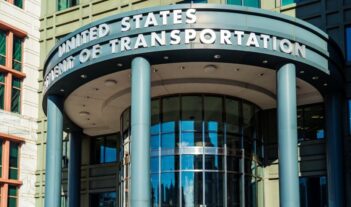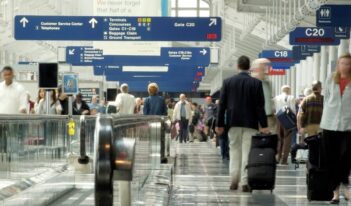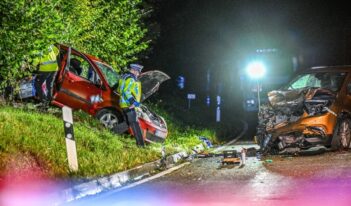
House bill on autonomous vehicles restricts state policies that could improve safety.
It has been a busy month for autonomous vehicles (AVs). In the first week of September, the U.S. House of Representatives passed a bill called the Self-Drive Act. And less than one week later, the National Highway Traffic Safety Administration (NHTSA) adopted an updated policy guidance on AV safety. Although the House bill understandably seeks to promote innovation in the development of AVs, the bill would upset the balance of regulatory authority between the federal government and the states, leaving serious gaps in legal protection of public safety in the near term.
The National Safety Council estimated that approximately 40,000 people were killed in motor vehicle accidents in 2016—a figure that has increased over the past several years. Studies have shown that human driver error is the cause of more than more than ninety percent of vehicle crashes. Advocates of highly automated vehicles (HAVs)—automated vehicles that could fully control all aspects of driving without human intervention—argue that taking humans out of the driver’s seat could therefore improve vehicle safety by preventing accidents.
On the flip side, many members of the public are not entirely ready to cede control to robot cars. A 2016 study by the University of Michigan Transportation Research Institute revealed that a mere 16 percent of respondents would prefer to ride in a driverless car, while 46 percent would prefer to retain “full control” of a vehicle, and 39 percent would prefer a “partially self-driving” vehicle.
HAVs can introduce new kinds of accidents, including automated system failure; and AVs that require some human monitoring can lead to driver complacency. For example, the National Transportation Safety Board (NTSB) recently issued a report on a well-publicized fatal crash last year between a Tesla vehicle and a truck in Florida. The NTSB report concluded that the design of Tesla’s Autopilot system was in part to blame, both because the “automated vehicle control system was not designed to, and could not, identify the truck crossing the Tesla’s path or recognize the impending crash,” and because “the way in which the Tesla ‘Autopilot’ system monitored and responded to the driver’s interaction with the steering wheel was not an effective method of ensuring driver engagement.”
Regardless of whether one favors or fears innovation in autonomous vehicles, there is no question that HAVs—with or without steering wheels—are coming in some form and that they will soon start to share the roads with human drivers, at least for a period of time. When an innovation in business or technology does not fit neatly into a preexisting legislative or regulatory scheme, the innovation can create a policy disruption.
As I have argued in a forthcoming article, while HAVs hold the potential to solve some of the safety problems that the existing regulatory structure was designed to address, they introduce new safety concerns. HAVs also upset the balance of regulatory authority between the federal government and the states—a federalism disruption. In this case, the federalism question and the safety question are intimately related.
Since 1966, the National Traffic and Motor Vehicle Safety Act has authorized the U.S. Department of Transportation, through NHTSA, to issue federal motor vehicle safety standards for “motor vehicles” and “motor vehicle equipment.” Once NHTSA has adopted such a safety standard, the federal law preempts the states from adopting conflicting legislation or regulations. In this scheme, the states maintain regulatory primacy over the “driver,” whom they regulate through insurance rules, licensing, and common law tort rules, as federal law carves out an exception for state tort law. The states can likewise act if NHTSA has not yet adopted a safety standard. HAVs disrupt this federalism balance because vehicle hardware and software can now be programmed in advance to perform tasks formerly within the scope of the driver’s control. HAVs thus blur the distinction between “drivers” and “vehicles,” a key distinction underlying the allocation of regulatory responsibility between states and the federal government for the past 50 years.
To date, despite having the authority to do so, NHTSA has not adopted any mandatory federal safety standards for HAVs. Instead NHTSA has issued a series of informal policy guidance documents that lay out best practices for auto manufacturers. More generally, NHTSA encourages states to work with the federal government, industry, and others on HAV legislation so as to avoid a patchwork of inconsistent rules that could stifle innovation. These guidance documents are a form of advisory nonpreemption—despite having the authority to regulate, NHTSA acknowledges that states are continuing to regulate HAV safety, because only the adoption of a federal motor vehicle safety standard triggers the preemption provision. The states have therefore acted as laboratories of policy experimentation, adopting different rules about whether vehicles without a human driver can be tested or deployed on public streets.
Concerned about a possible patchwork of state laws that could hinder innovation, the House has passed H.R. 3388—the Self-Drive Act—which would amend the current Motor Vehicle Safety Act to address HAVs explicitly.
Although H.R. 3388 appears to do a good job of promoting innovation, it fares less well on the connection between federalism and safety. In a departure from the current balance of power between the federal government and the states, the bill would immediately preempt any state or local government from adopting or enforcing “any law or regulation regarding the design, construction, or performance of highly automated vehicles, automated driving systems, or components of automated driving systems,” even in the absence of a federal motor vehicle safety standard.
This immediate preemption may create a safety gap that could persist for some time. The bill would direct NHTSA to issue a final rule within two years that requires “the submission of safety assessment certifications regarding how safety is being addressed” by manufacturers. In the interim two-year period, the bill would require auto manufacturers to submit a safety assessment letter as contemplated by any NHTSA guidance in effect that requires such an assessment.
However, the current 2017 NHTSA guidance does not require such a certification letter at all. Instead, the guidance emphasizes that it is “entirely voluntary.” And, even if NHTSA guidance did require such a letter, the bill would prohibit NHTSA from conditioning the “deployment or testing” of HAVs “on review of safety assessment certifications.”
H.R. 3388 appears to leave a safety gap until NHTSA adopts a rule on safety assessments. It would further direct NHTSA to review existing federal motor vehicle safety standards to determine those that must be amended and to initiate a rulemaking within one year on the subject. Yet the initiation of a rulemaking within one year does not guarantee how quickly a final rule would be adopted, and there is always the possibility that a final rule would be stayed in response to legal challenge. In any event, there is no requirement to adopt specific, binding federal safety standards. This, too, leaves a potential safety gap that the states could not fill with legislation or regulations. Preemption of state safety rules in the absence of federal motor vehicle safety standards represents a significant change from the status quo.
The Self-Drive Act’s preemption language expressly carves out both state common law and state or local laws on “registration, licensing, driving education and training, insurance, law enforcement, crash investigations, safety and emissions inspections, congestion management of vehicles on the street,” as long as those laws do not pose “an unreasonable restriction on the design, construction, or performance of highly automated vehicles, automated driving systems, or components of automated driving systems.”
Although state tort law may create incentives for manufacturers to address safety concerns once courts have ruled on the appropriate standard of care, lawsuits can be slow, and they are retrospective in nature. Courts can only respond to accidents after they occur. Although avoiding a patchwork of state laws is a reasonable way to promote innovation and economies of scale, preempting state action even in the absence of federal safety standards fails to take into account the significant concerns that states have in protecting their citizens from harm as a result of the deployment of HAVs on public roads.
Despite NHTSA’s “strong encouragement” that the states not adopt the 2017 voluntary guidance as a binding legal requirement for “development, testing, or deployment” of HAVs, at least NHTSA’s voluntary approach acknowledges that states can continue to regulate until the federal government adopts binding requirements. However, if the 2017 voluntary guidance were to be combined with the premature preemption of state law proposed by H.R. 3388, this potent combination of voluntary standards and premature preemption would leave unnecessary gaps in HAV safety regulation.
As the Senate takes up the issue, that chamber should adopt a different approach that better balances the promotion of innovation and with the consideration of safety concerns. A better approach would permit the states to continue to engage in policy experimentation on HAV safety regulation until the federal government adopts uniform federal motor vehicle safety standards – consistent with the current regime under the Motor Vehicle Safety Act.
At the very least, in the alternative, Congress could create a two-car system, at least temporarily until NHTSA adopts uniform federal motor vehicle safety standards. The two-car system could be modeled on the Clean Air Act’s California waiver provision. The Clean Air Act generally preempts state regulation of vehicle emissions in order to promote economies of scale in the manufacture or new motor vehicles. However, the Act exempts the state of California from this limitation if the state demonstrates that its rules are at least as protective of human health as the federal standard. Other states can then adopt California’s emissions standard, creating a two-car regime.
Maintaining jurisdictional overlap in this dynamic fashion has led to policy improvement over time in the emissions context. And, while California and the federal government can choose to adopt a uniform standard, as they did with industry input under the Obama Administration for combined vehicle emissions and fuel economy standards, the California waiver provision ensures at the very least that the states have a place at the bargaining table. Such a waiver provision and two-car system could be applied to HAV safety regulation and yield similar results, at least on a temporary basis. We already live in a two-car regime for emissions control—extending that regime to HAVs would offer a sensible middle ground.




